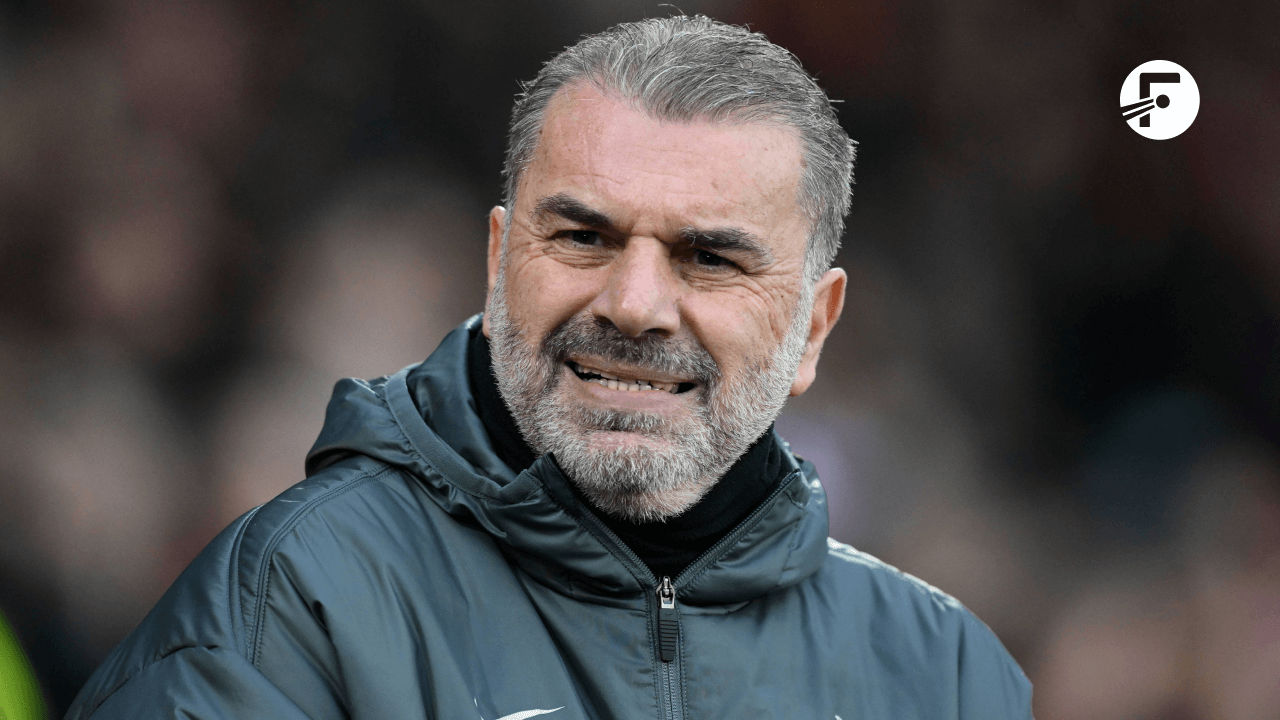After an eighth-place league finish in 2022/23 – their worst in about 15 seasons – Tottenham Hotspur went for a change in direction and hired a relatively unproven head coach in the form of Ange Posecoglu. While the Australian tactician had a great deal of experience from around the world, he had not worked at the most elite level for as long as predecessors such as José Mourinho or Antonio Conte. More importantly, his style of play was quite different, requiring the squad to be rebuilt in his image.
About 18 months down the line, the Premier League table alone suggests Spurs’ fortunes have not improved much. However, it hardly paints an accurate picture. There are a myriad of factors that need to be analysed to appropriately assess Tottenham Hotspur’s current position.
Exceeding expectations in 2023/24
Postecoglu’s side might actually have done too well for their own good in their first season. Many analysts warned that they would need a good deal of time and transfers to properly click, so another finish outside the European spots was said to be on the cards. Instead, Spurs finished as high as fifth and even came within a couple of points of the Champions League places, naturally leading fans to get their hopes up for what they would have expected to be an even better second season.
However, it is worth noting that Tottenham overperformed in various respects last term. It could also be argued that rivals’ struggles were the main reason they jumped up three spots from the previous campaign. Indeed, Manchester United, Newcastle United and Chelsea – who all finished above Spurs in 2022/23 – had disappointing seasons for varying reasons. Even then, Tottenham had to outperform their expected points pretty significantly to finish fifth.
Had Spurs ended up in a mid-table position last season and improved to fifth in 2024/25, there would surely be widespread positivity around Postecoglu’s work.
Unending injury issues
Tottenham’s league position last season earned them UEFA Europa League qualification, which obviously is a positive on the whole. However, one downside was an increased number of fixtures since they did not play European football in 2023/24. This has proven to be an issue in some respects as the constant barrage of matches has likely contributed to Spurs’ ever-increasing injury list.
The perfect encapsulation of Tottenham’s ongoing predicament is the fact that their first-choice back four of Pedro Porro, Cristian Romero, Micky van de Ven and Destiny Udogie have only shared the pitch for 15 minutes since starting eight of the season’s first nine Premier League matches together. At present, all of them bar Porro is out injured, as is first-choice goalkeeper Guglielmo Vicario and backup defender Ben Davies. While the forward department has not suffered such massive losses simultaneously, each of Tottenham’s senior attackers other than Dejan Kulusevski have also missed some matches this season.
As a result of these absences, Postecoglu has had to fashion all sorts of makeshift solutions from fielding teenage full back Archie Gray at the heart of the defence to consistently using 17-year-old attacking talent Mikey Moore for a stretch of games. Despite these players’ best efforts, Spurs’ performances and results have naturally taken a hit.
Tactical rigidity
While there is a significant element of misfortunate behind Tottenham’s injury crisis, it would not be right to entirely absolve Postecoglu of all blame. For one, critics may argue that his intense style of play is at least partly causing all these injuries, and it also makes it more difficult for those looking to return to full fitness.
An even stronger point is the fact that the 59-year-old coach has changed next to nothing in his system despite having to field players out of position and consistently failing to get good results. For example, his tactics are quite demanding on the centre-backs as they are often left isolated with a lot of ground to cover both in and out of possession. While the likes Romero and Van de Ven are adept at such roles, it is unreasonable to expect a teenager playing out of position in his first top-flight season to do an equally good job.
So, Postecoglu unwillingness to tweak his approach is one part of the reason that Spurs have conceded the fifth-highest xG tally in the league so far.
Questionable transfer business
Perhaps the biggest cause of Tottenham’s struggles this season is neither their tactical approach nor their luck with injuries but their work in the summer transfer window. Postecoglu did a fantastic job of making do with what he had last season and refashioning various players to suit his system, but there was still a good deal of work to be done in the transfer window to properly consolidate the squad. From attack to defence, various positions could have used reinforcement, but not all got them.
Spurs fans have often been displeased with a perceived lack of investment from their owners, but they have spent nine-digit sums on transfer fees in five of the last six seasons. They invested close to €150 million last summer, so the real issue lies in their decision-making rather than raw spending.
Almost half of the money Tottenham spent ahead of this season was on one player: Dominic Solanke. While he has not performed poorly at all, a big-money striker should never have been Spurs’ top priority. They averaged close to two goals per game in the league last season, so their attack was doing fine. Instead, they could have made a couple of signings in the defensive department, and with hindsight, it is easy to see why going into the season with just three out-and-out centre-backs was a bad idea.
Postecoglu has certainly proven that he can take a full-strength squad to impressive heights, so Tottenham must aim to support him with appropriate squad building. As long as he can field something close to a first-choice XI, the Australian tactician should still be fully backed to succeed with Spurs.
(Cover image from IMAGO)
